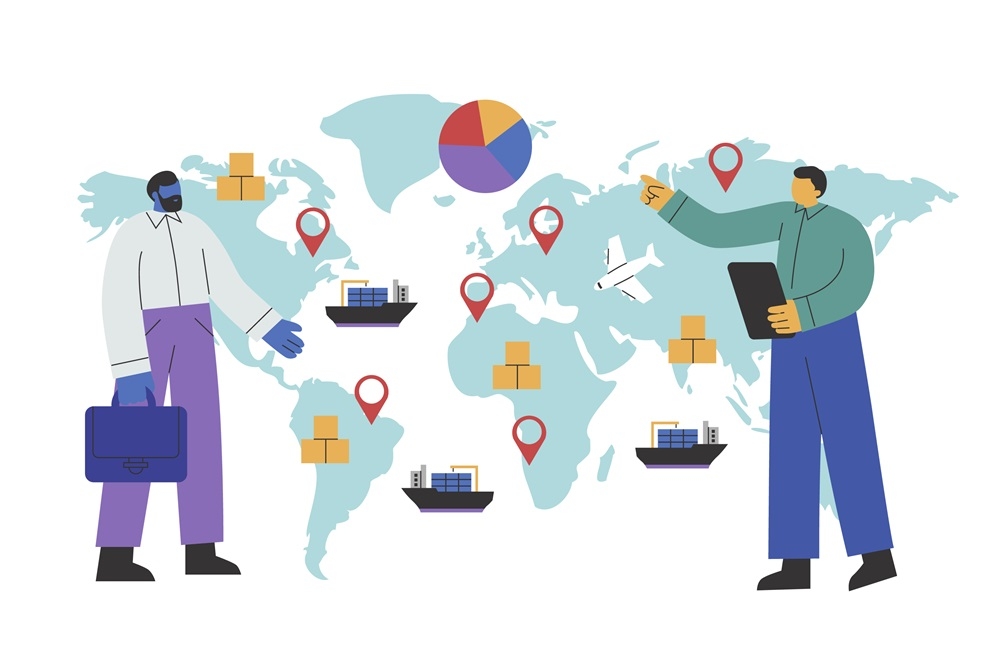Why Is Demand Forecasting Crucial for Business Success?

Demand forecasting is a cornerstone of effective business planning, relying on historical data, market analysis, and other relevant factors to predict future product or service demand. It transcends mere speculation, utilizing data-driven insights to inform strategic decision-making and optimize resource allocation. By accurately anticipating consumer needs and market trends, businesses can adjust production levels, inventory management, and marketing strategies accordingly.
Effective demand forecasting enables companies to mitigate risks, minimize excess inventory, and capitalize on emerging opportunities. It serves as a roadmap for organizational growth and profitability, guiding investments and operational decisions. In today's fast-paced and competitive landscape, where consumer preferences evolve rapidly, mastering demand forecasting is essential for maintaining a competitive edge and sustaining long-term success.
Understanding Demand Forecasting
Demand forecasting is the strategic process through which businesses predict future customer demand based on a variety of factors including historical sales data, market trends, economic indicators, and consumer behavior. By carefully analyzing this information, businesses can gain valuable insights into future demand patterns, allowing them to make informed decisions about production schedules, inventory management, and resource allocation.
Effective demand forecasting enables businesses to anticipate fluctuations in demand, mitigate risks of stockouts or excess inventory, and optimize their supply chain operations. By aligning production with anticipated demand, businesses can minimize costs, maximize efficiency, and ultimately enhance customer satisfaction. In today's rapidly evolving market landscape, where consumer preferences and market conditions can change quickly, mastering demand forecasting is essential for businesses to stay competitive and responsive to customer needs. It serves as a critical tool for strategic planning and decision-making, helping businesses adapt to changing market dynamics and achieve long-term success.
Benefits of Demand Forecasting
The benefits of demand forecasting are manifold. Firstly, it improves inventory management by ensuring that businesses maintain optimal stock levels to meet customer demand without overstocking or running out of key items. This not only reduces storage costs but also minimizes the risk of stockouts, which can lead to lost sales and dissatisfied customers.
Secondly, demand forecasting enhances production planning by providing businesses with a clearer picture of future demand trends. Armed with this information, businesses can streamline their production processes, optimize resource utilization, and minimize waste.
Thirdly, demand forecasting facilitates better decision-making by enabling businesses to allocate resources more efficiently. Whether it's manpower, raw materials, or production equipment, businesses can use demand forecasts to align their resources with anticipated demand levels, thereby maximizing productivity and minimizing costs.
Challenges in Demand Forecasting
Despite its many benefits, demand forecasting is not without its challenges. One of the biggest challenges is the inherent uncertainty of future demand. External factors such as changes in consumer preferences, market competition, and economic conditions can all impact demand levels, making it difficult to predict with absolute certainty.
Accuracy is another challenge in demand forecasting. Even with sophisticated forecasting models and advanced analytics tools, there's always a margin of error inherent in any forecast. This is particularly true in fast-changing industries where consumer preferences can shift rapidly, rendering past data less reliable as a predictor of future behavior.
Additionally, data collection and analysis can pose challenges, especially for smaller businesses with limited resources. Gathering accurate data from multiple sources, cleaning and preprocessing it, and applying the right statistical techniques to extract meaningful insights can be time-consuming and resource-intensive.
Best Practices for Effective Demand Forecasting
To overcome these challenges and make demand forecasting more accurate and reliable, businesses can adopt several best practices. These include:
-
Leveraging historical data: Past sales data can provide valuable insights into demand patterns, seasonal trends, and other factors that can inform future forecasts.
-
Incorporating market intelligence: Keeping abreast of market trends, competitor activities, and consumer behavior can help businesses anticipate changes in demand and adjust their forecasts accordingly.
-
Utilizing advanced forecasting techniques: Machine learning algorithms, predictive analytics, and other advanced techniques can help businesses generate more accurate demand forecasts by identifying complex patterns and relationships in the data.
-
Continuous monitoring and adjustment: Demand forecasting is an ongoing process that requires regular monitoring and adjustment. By tracking actual sales against forecasted demand and making timely adjustments, businesses can improve the accuracy of their forecasts over time.
Role of Technology in Demand Forecasting
Technological advancements have revolutionized demand forecasting, enhancing its accuracy, efficiency, and accessibility. AI and machine learning algorithms excel in analyzing extensive datasets, uncovering intricate patterns and trends beyond human capability. These tools enable businesses to anticipate future demand with unprecedented precision. Additionally, advanced analytics platforms offer real-time insights into dynamic market conditions, empowering companies to make proactive decisions and maintain a competitive edge. By leveraging these technologies, businesses can optimize inventory management, streamline production processes, and allocate resources more effectively.
Moreover, the democratization of forecasting tools allows organizations of all sizes to harness the power of data-driven insights, democratizing access to sophisticated forecasting capabilities. In an increasingly fast-paced and competitive market landscape, embracing technological innovations in demand forecasting is crucial for businesses to anticipate customer needs, mitigate risks, and drive sustainable growth.
Conclusion
In today's fast-paced and competitive business environment, demand forecasting is more important than ever. By accurately predicting future demand and aligning their operations accordingly, businesses can gain a competitive edge, maximize efficiency, and drive sustainable growth. While demand forecasting may pose challenges, the benefits far outweigh the costs, making it a crucial tool for business success.
Predict your sales volume and demand trends with our Artificial Intelligence-based SaaS platform visit: https://thousense.ai/
- Industry
- Art
- Causes
- Crafts
- Dance
- Drinks
- Film
- Fitness
- Food
- الألعاب
- Gardening
- Health
- الرئيسية
- Literature
- Music
- Networking
- أخرى
- Party
- Religion
- Shopping
- Sports
- Theater
- Wellness
- News


